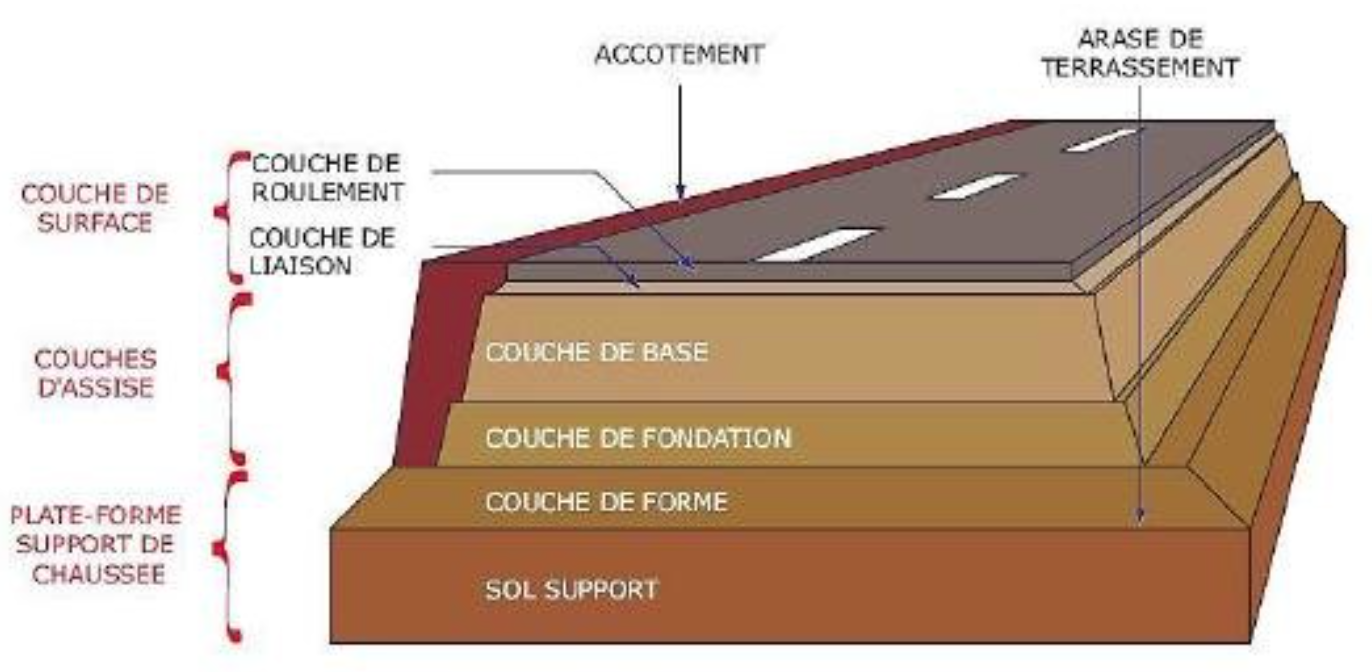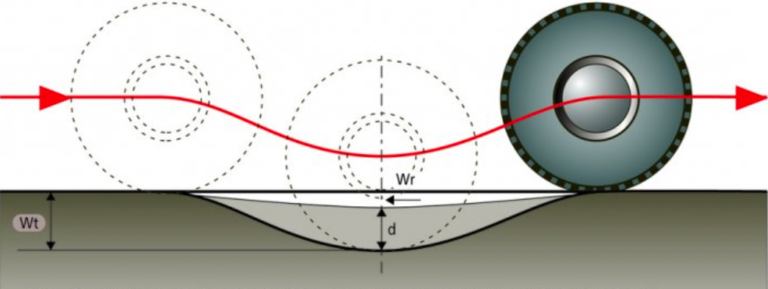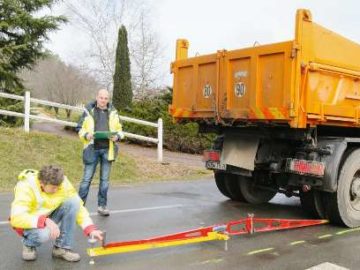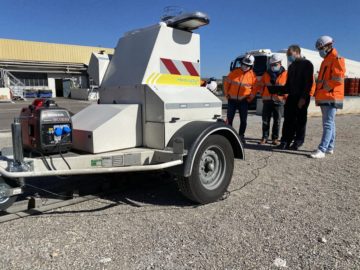Measuring soil deflection
To assess the residual quality of a pavement, to carry out sizing, reinforcement and maintenance studies. In the field of pavements, concerned by the NF P98 200-1 standard, the deflection measurement applies to all types of structures. On the other hand, the measurement conditions and the interpretation may depend on the structure considered.
Our Services
Choosing the right methodology for measuring soil deflections.
Hire or buy: Benefit from the best equipment on the market for measuring soil deflection.
We provide rapid quotations, and monitor production deadlines in compliance with specifications.
Call in a service provider for measurement services carried out by an experienced professional. Rovem Partner will put you in touch with the right service provider free of charge.
We make it easy for you to do business with us, so you can be sure of getting a fair price and the best value for money.

What is it ?
It measures the vertical displacement of a asphalt layer at one of its points under the effect of a load, measured at the surface. The deflection is expressed in hundredths of a millimeter.

When should soil deflection be measured ?
From PF2 on soils or materials treated with hydraulic binders Before the installation of the subgrade: to receive earthwork platforms (these are only platforms treated to allow the circulation of an FWD) Upstream for maintenance diagnostics on wearing courses and asphalt layers.

There are various correlations between the modulus characterising lift and deflection, which must be used with discretion.
Method recommended by Rovem Partner
Falling Weight Deflectometer test FWD – HWD
Frequently asked questions
Deflection is used to obtain the maximum deflection, the radius of curvature, the SCI, and in Alize the modulus of each layer, the service life of the structure and the thickness of the reinforcement.
Deflection is used to determine the mechanical characteristics of pavement layers.
Deflection is the main method for testing pavements.
The purpose of pavement testing is to determine the surface and structural characteristics of pavements, using various measurement methods, generally non-destructive. The aim is to characterise the state of deterioration of the pavement, and to provide the information required for maintenance decisions.
The measurement of surface deformability or deflection is a historical measure of structural assessment. It is defined as follows in the LPC test method n°39:
“A moving load induces a deflection basin on the surface of a pavement. The surface area of this zone and its depth (amplitude) depend on the type and condition of the structure and the value of the load. Measuring surface deformability involves attaching or placing a sensor to measure vertical displacement at the point on the pavement where the test is to be carried out.
A rolling load is brought progressively closer to the sensor, which at a given moment passes over it and then moves away from it. The variations in the vertical deformation of the pavement as a function of the distance separating the point of measurement and the point of application of the load constitute the line of influence which is measured by the sensor”.
The maximum deflection corresponds to the maximum vertical displacement of the measurement point (expressed in mm/100);
the curvature C corresponds to the curvature of the line of influence at the moment of maximum vertical displacement of the measurement point (expressed in m-1)”.
The most advanced measurement systems record the defined deflection basin at several points, providing a more complete and accurate description of the deflection of the pavement.Neglecting seasonal variations in deflection and for a flexible bituminous pavement, studies have shown that during the first years of service, it varies very little and becomes constant. In some cases, there is even a decrease in its value. However, after a long period of use, the maximum deflection increases, indicating the end of the pavement’s structural life.
References for the 3 articles MEASURING DEFLECTION :
– Observatoire National de la Route (1996) – Dictionary of road maintenance. Theme 1: organisation of public works departments. Theme 2: road generalities. Theme 3: pavements.
– LPC test method n°39
– Article R312-5 of the highway code
– BULLETIN DES LABORATOIRES DES PONTS ET CHAUSSÉES -209- MAI-JUIN 1997 – RÉF. 4087 – PP. 19-28
– RGRA N°966 Sept 2019 Emmanuel Loison – Joao Manuel Vieira – Sébastien Denaes – COLAS – and Sébastien Pellevrault – RINCENT NDT.
⁃ CETE IF (2008) – Guide régional – Catalogue des structures de chaussées chapitre plates-formes.
Deflection provides maximum deflection, radius of curvature, ICS, and in Alize the modulus of each layer, structural life, and reinforcement thickness. The deflection makes it possible to determine the mechanical characteristics of the pavement layers. Deflection is the main method of inspecting pavements.
Pavement auscultation aims to determine the surface characteristics and structural characteristics of pavements, using different measurement methods, generally non-destructive. Its objective is to characterize the state of deterioration of the pavement, and to provide the elements of information necessary for decisions to be made in terms of maintenance.
The measurement of surface deformability or deflection measurement is a historical measure of structural assessment. It is defined as follows in the LPC test method No. 39:
A mobile load induces a deflection basin on the surface of a roadway. The area of this zone and its depth (amplitude) depend on the type and condition of the structure as well as the value of the load. The measurement of surface deformability consists of fixing or installing, at the point on the roadway where the test is to be carried out, a sensor making it possible to measure the vertical displacement. A rolling load is gradually approached, which at one point passes over it and then moves away from it. The variations in the vertical deformation of the roadway as a function of the distance between the point of measurement and the point of application of the load constitute the line of influence which is measured by the sensor.
The following characteristic values are deduced from it:
the maximum deflection corresponds to the maximum vertical displacement of the measurement point (expressed in mm / 100);
the curvature C corresponds to the curvature of the line of influence when the vertical displacement of the measurement point is maximum (expressed in m-1). “
The most developed measurement systems record the deflection basin defined at several points, providing a more complete and precise description of the deflection of the pavement.
By neglecting the seasonal variations of the deflection and for a flexible bituminous pavement, studies have shown that during the first years of service, it varies very little and becomes constant. In some cases, a decrease in its value is even noted. However, after a long period of operation, the maximum deflection increases and indicates the end of structural life of the pavement.
References – Deflection Measurement :
– National Highway and Road Observatory (1996) – Dictionary of road maintenance. Topic 1: Organization of equipment maintenance. Topic 2: Generalities about roads. Topic 3: Pavement.
– Testing method LPC n°39
– Article R312-5 traffic laws
– Publication : BULLETIN DES LABORATOIRES DES PONTS ET CHAUSSÉES -209- MAI-JUIN 1997 – RÉF. 4087 – PP. 19-28
– RGRA N°966 Sept 2019 Emmanuel Loison – Joao Manuel Vieira – Sébastien Denaes – COLAS – et Sébastien Pellevrault – RINCENT NDT.
⁃ CETE IF (2008) – Regional Guide – Catalog of pavement structures – chapter platforms
⁃ https://hal.archives-ouvertes.fr/tel-01934728/document



